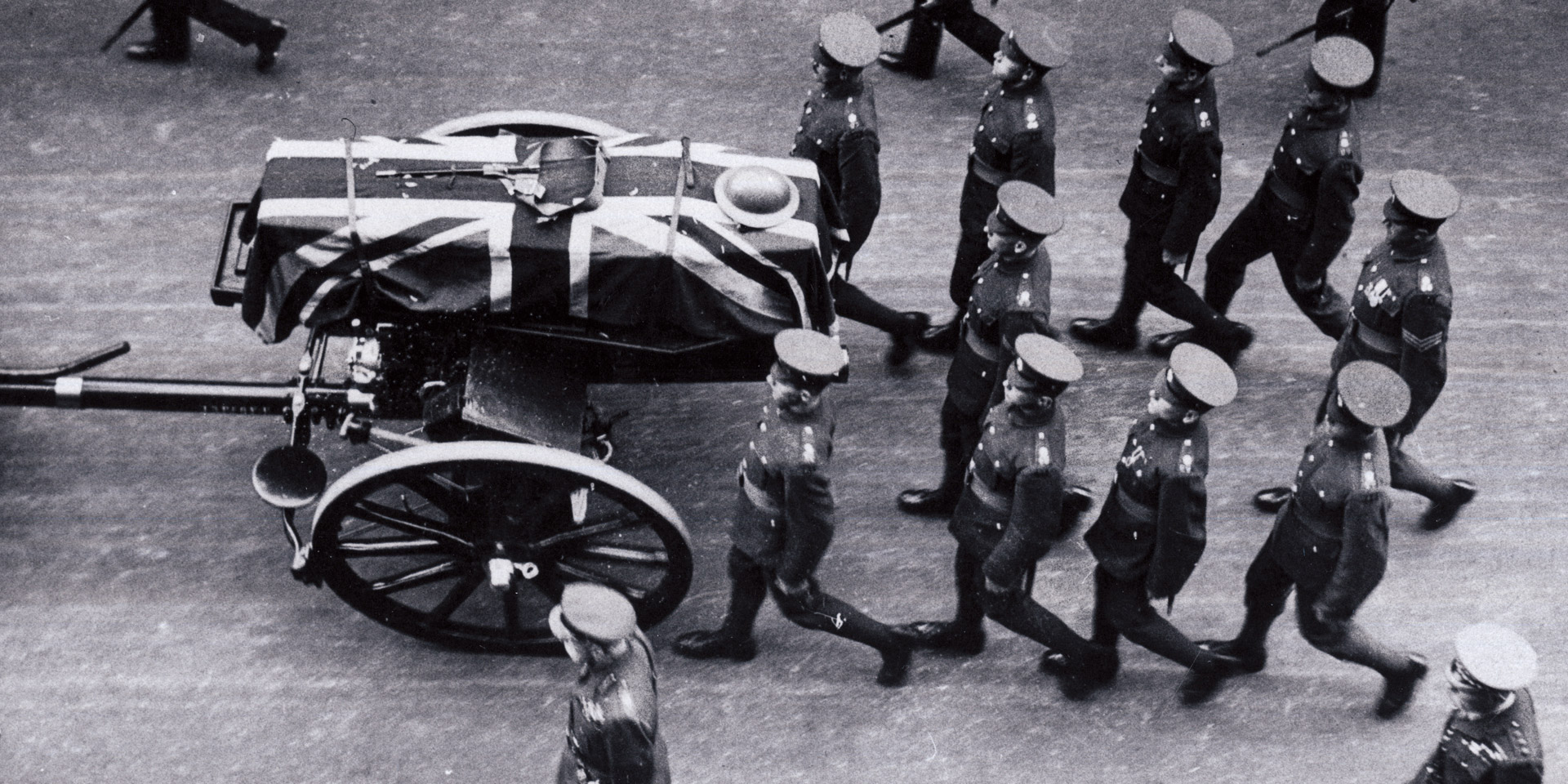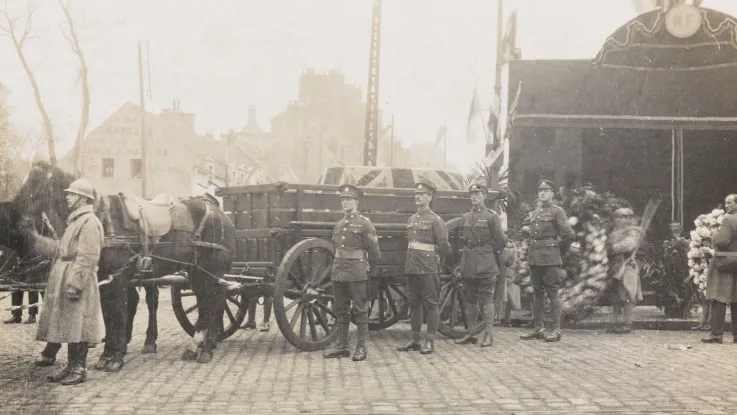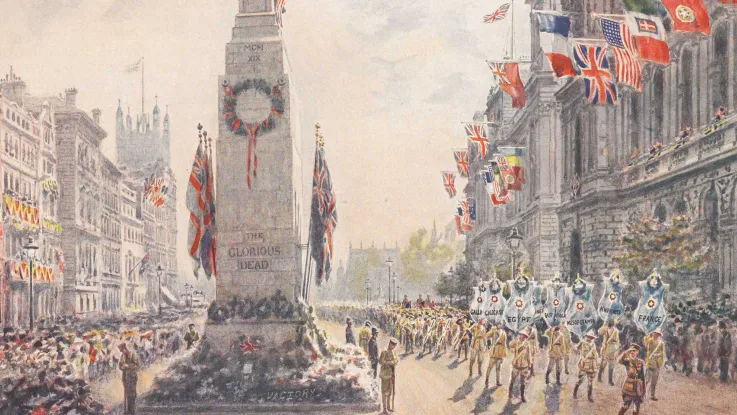Buried Among Kings: The Story of the Unknown Warrior

One hundred years ago, the Unknown Warrior was laid to rest in Westminster Abbey. Our exhibition tells the story of this symbolic memorial dedicated to the British service personnel who died during the First World War.
The Grave of the Unknown Warrior was created as a collective memorial for the millions of grieving Britons after the First World War. Hundreds of thousands of soldiers were killed in theatres of war around the world; many bodies were lost entirely and many more could not be identified. There was also much controversy over repatriation versus overseas burials for those lost in the war.
In 1916, Chaplain David Railton conceived the original idea for an Unknown Warrior following a moving encounter with a wooden cross on the Western Front, inscribed 'An Unknown British Soldier'.
In August 1920, Railton wrote to Herbert Ryle, Dean of Westminster, to propose the idea. Ryle was inspired and approached both King George V and the Prime Minister, David Lloyd-George. The King was sceptical but Lloyd-George was enthusiastic and succeeded in winning him over. In mid-October a government committee was formed to plan the scheme and orders were issued to the Army commander in France to select a body for return to the United Kingdom for burial on Armistice day, just three weeks later.
For the first time in 100 years, this exhibition brings together objects, paintings, photography and personal testimony from the time. It places the Unknown Warrior in the context of the First World War, It explores the debates over commemorating the war dead, the origins of the concept, the physical repatriation and the warrior’s procession to his final resting place. It also outlines the poignant burial ceremony and the unknown warrior’s global legacy today.
The exhibition pays special attention to the selection of the Unknown Warrior, a process that was shrouded in secrecy and remains much disputed to this day. Key accounts by Brigadier General Wyatt are displayed alongside the bible carried by Chaplain George Kendall during the selection process, as well as a copy of the secret orders given to Captain Albert Fisher.
Displayed for the first time is a fragment of the original wooden Cenotaph from 1919-20. ‘The Passing of the Unknown Warrior’ by Frank O Salisbury, a painting on loan by Her Majesty the Queen from the Royal Collection, forms the centre of the exhibition.
It is with great thanks to the following organisations that we are able to piece this important story together: Westminster Abbey, CWGC, Royal Collection Trust, Western Front Association.


